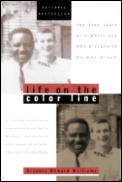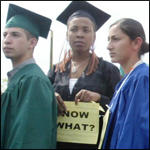Beyond FUNDRAISING: Spectrum of Hope
 I’d like to end the month with some good news from the Mile High City. On October 23, a resource fair called Spectrum of Hope was held on the old Lowry Air Force Base campus to help victims of Hurricane Katrina who’d been relocated to Denver. Sponsored by the monthly newspaper Urban Spectrum, the event not only featured free food and entertainment to provide brief relief from the daily worries these people endure, it brought together financial planners, job recruiters, and counselors to help some of our town’s newest residents plan for their futures here. In the spirit of Bill Penzey’s advice to reach out to hurricane victims in our midst, the good people at Urban Spectrum not only set out to offer their condolences or monetary contributions, they set out to provide opportunities through which hope can take root and individuals—people with families to feed who have lost everything they’ve ever known—can see some real progress in their struggles to get back on track.
I’d like to end the month with some good news from the Mile High City. On October 23, a resource fair called Spectrum of Hope was held on the old Lowry Air Force Base campus to help victims of Hurricane Katrina who’d been relocated to Denver. Sponsored by the monthly newspaper Urban Spectrum, the event not only featured free food and entertainment to provide brief relief from the daily worries these people endure, it brought together financial planners, job recruiters, and counselors to help some of our town’s newest residents plan for their futures here. In the spirit of Bill Penzey’s advice to reach out to hurricane victims in our midst, the good people at Urban Spectrum not only set out to offer their condolences or monetary contributions, they set out to provide opportunities through which hope can take root and individuals—people with families to feed who have lost everything they’ve ever known—can see some real progress in their struggles to get back on track.“The effects of Katrina will be around for a long, long time,” said Spectrum of Hope co-chair and Urban Spectrum publisher Rosalind “Bee” Harris-Diaw. “We’re in this for the long haul. And we will support (the survivors) for as long as they need. We want them to get to know us and we want to get to know them—and let them know there is hope.”
















